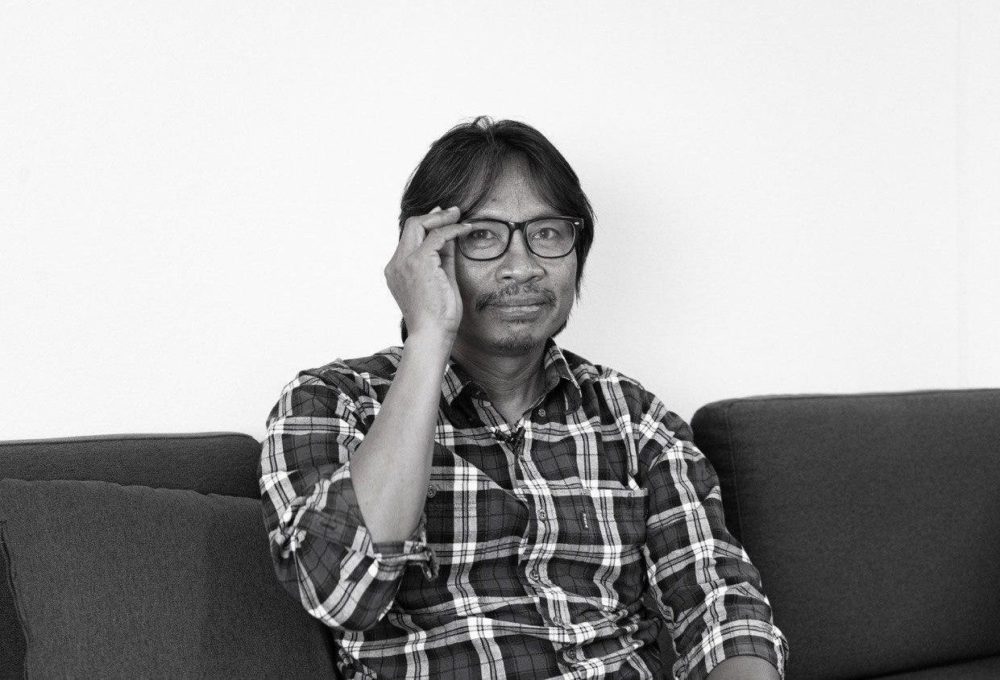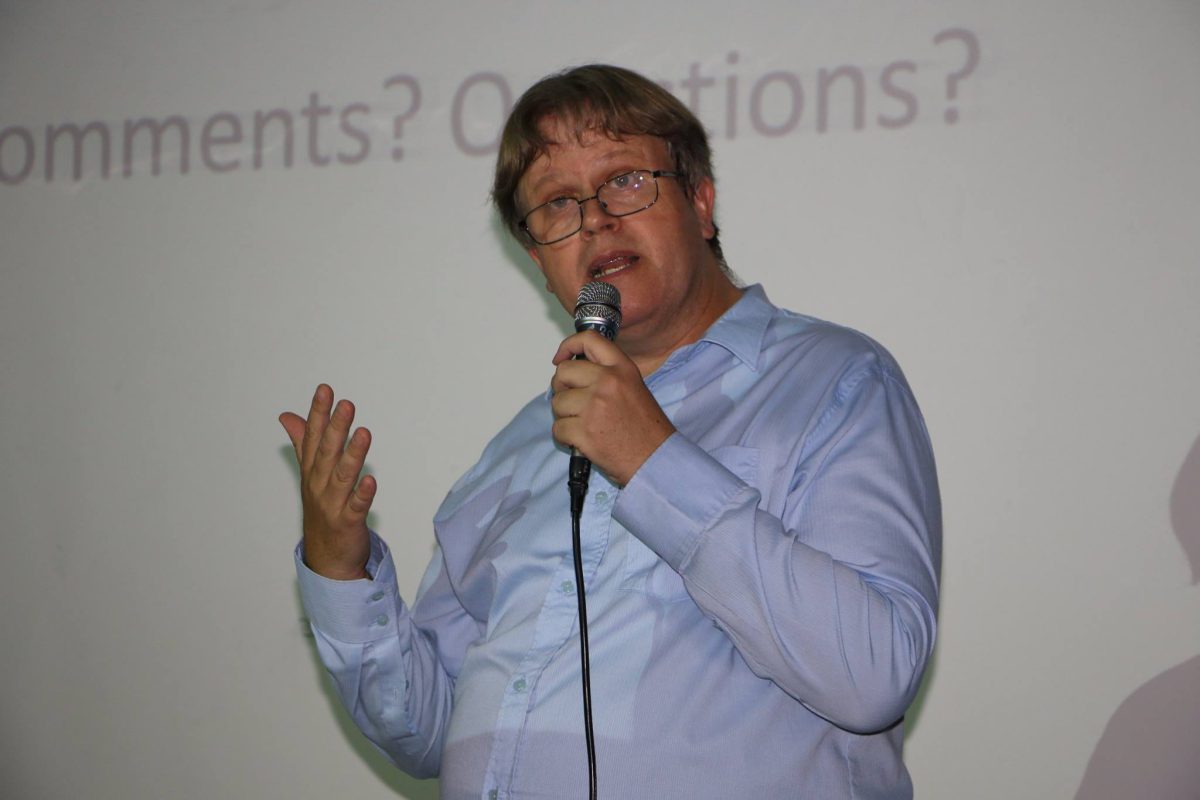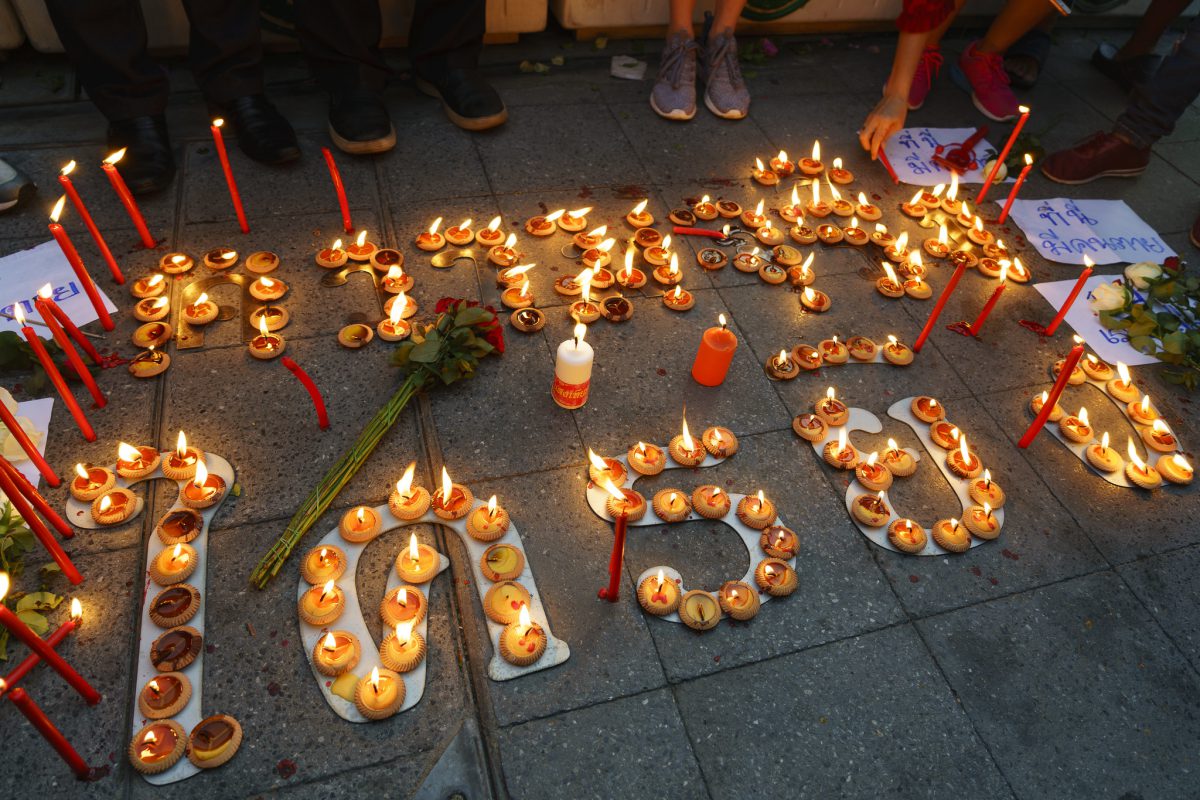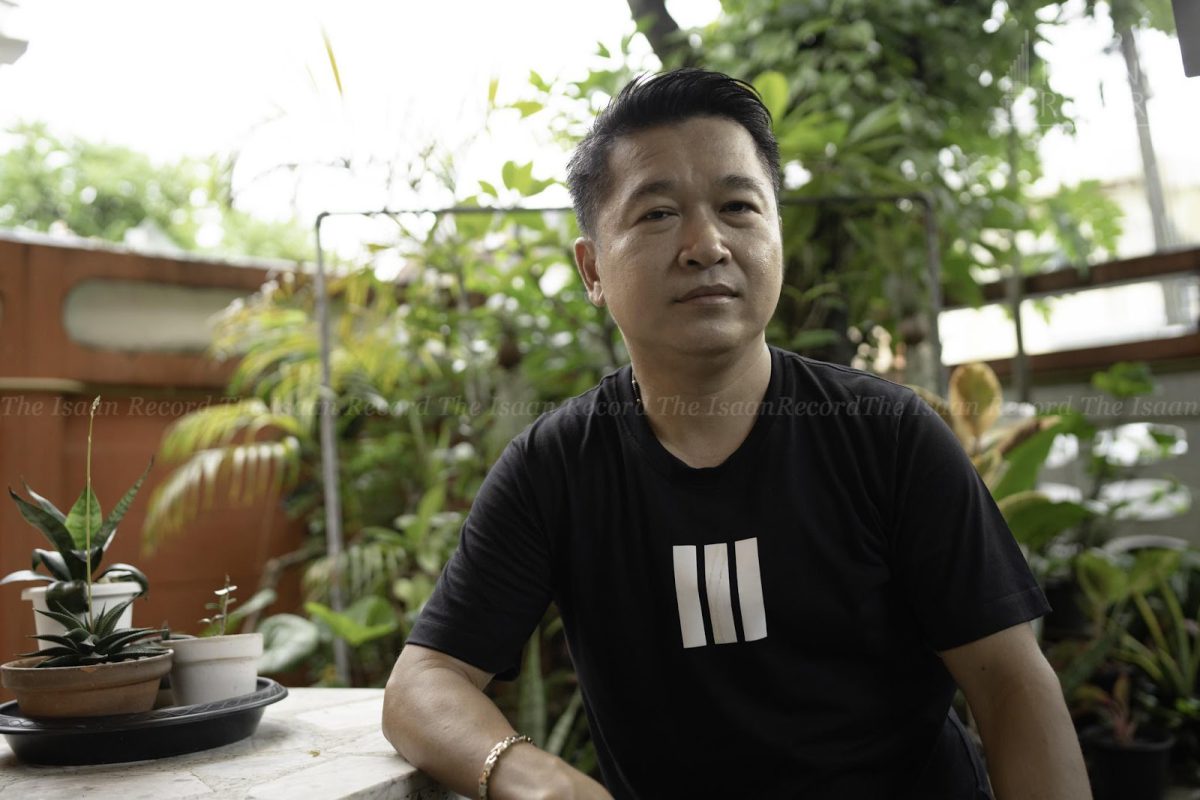
Cover photo credit: Cyrille Andres / used with permission
By Hathairat Phaholtap
Though ten years have passed since the political violence of 2010, the rattle of gunfire and the smoke of battle is still the mind’s eye of Teerapol Anmai, a professor at Ubon Ratchathani University’s Faculty of Liberal Arts. In 2010, he travelled to Bangkok to mix with the Red Shirts at their protest sites which would eventually become the killing grounds for, as Teerapol puts it, “people who are seen as less than people.”
The first attempt to crackdown on the protestors started on April 10, and it crackled on until the army moved in to dissolve the protest by lethal force on May 19. Teerapol takes The Isaan Record back ten years to be at the scene of protests,
Just ordinary folks
The violence at the Khok Wua intersection in Bangkok on April 10, left Teerapol with many questions, and so, soon after, he travelled from Ubon Ratchathani to find answers. He had to know how the heart of the capital city–on Ratchadamnoen Road, near Sanam Luang, near the Democracy Monument–could become a killing field for both Red Shirts and soldiers; 26 of them.
“I went to look for signs of the fighting at Khok Wua intersection and at Ratchaprasong. I walked around and tried to find some of my students who I knew had been taking part in the protests. I wanted to see how they were living out there,” Teerapol recalls. “What I remember thinking right then, as I walked through those masses of people, was ‘how could anyone bring themselves to fire into a crowd like this?’.”
Teerapol still doesn’t have the answer to that question.
But his visit made him understand why the Red Shirts had streamed into Bangkok from all corners of the country. They were there to pressure the government of Prime Minister Abhisit Vejjajiva to dissolve parliament and call fresh elections. They viewed his government as one that had been hatched in an army camp.
“They felt that it just wasn’t right. Using the power of the military to jury-rig a situation where a political party that had not won an election was able to form a government from within an army camp,” Teerapol says.
At the protest, he could feel most tangibly the camaraderie between the protesters who had come from many different provinces and all regions of the country.
“I walked into the protest area while folks were making dinner. Of course, you could hardly walk a few paces without being invited to join them. I saw how village-like, how ‘rural’ they all were, regardless of which part of the country they hailed from. ‘Come and have some dinner, chief!’ they’d say to me, a total stranger. So, I joined them for dinner,” Teerapol says, recalling the atmosphere.

What are Red Shirts to society?
Then, what seemed unthinkable for many at the scene happened on May 19, 2010.
“When the crackdown started, I remember feeling as if they didn’t even view the Red Shirt protesters as human. They viewed them as something or another that just needed to be exterminated. Like bed bugs, like mosquitoes, like some kind of living thing that isn’t human,” Teerapol says as if he is reliving the emotions of being amidst the target of the military’s crackdown.
He pauses before adding, “What were Red Shirts to Thai society? I’d say they were people, just not quite people who are counted fully as citizens of this country.”
Teerapol believes it was not only the disdain of those in power against the Red Shirts that led to the lethal crackdown. He also sees parts of the middle-class in Bangkok as partially complicit.
“The ruling class of this country were dead-set against the ways of the Red Shirts,” Teerapol notes. “But there were also voices from some Bangkokians saying things like ‘these people are red buffaloes,’ which is basically hate speech. They were producing and sharing images that painted Red Shirts in a very bad light. They were, in effect, priming the legitimacy of the crackdown in advance. When the crackdown happened, and Red Shirts got shot, got killed, got arrested–they said that it was all deserved because they were burning down the country.”
But one thing that really got under his skin was when, after the crackdown, a writer penned a poem heaping blame on the dead for a cinema that was burned down in the melee.
“Someone wrote a poem, a sort of eulogy for the cinema that got burned down. It said that the people who were killed were the ones who set fire to it even though the courts themselves had ruled out that possibility because the fire happened after the protesters had been dispersed,” Teerapol says as a point of order, bristling.
Isaan people: again and again
Teerapol, who is an expert on the history of the Northeast, says that protesting and revolting against central state power has been part of the region’s character for hundreds of years.
“Protests are a normal thing for Isaan people. It’s been a part of Isaan history long before the Red Shirts appeared,” Teerapol says. “Back in the day, if you wanted to quash a protest or an uprising in Isaan, you’d just go and burn down a whole village. You could do anything like that because it was accepted. There’s an evil culture that exists among the ruling class of this country, and it shows in the way they treat Isaan people.”
The political demonstrations of 2010 were, in Teerapol’s eyes, completely normal. To him, the protestors were exercising their basic democratic right to protest.
“Don’t forget that Isaan used to be a ‘red’ area during the Cold War. It was the base of operations for the Communist Party of Thailand,” Teerapol points out as a way of explaining why Isaan is often viewed with some degree of suspicion by the Thai state.
“I’m really not sure whether the various governments of Thailand through the years have ever really viewed Isaan people as equally people, as citizens who are equally citizens, as one voice one vote, like they did with people from other places.”

Biding their time
After the crackdown of 2010, many from the Red Shirt leadership were prosecuted. Some were assaulted in public by unidentified attackers. A large number of the protesters were arrested and prosecuted under various charges. This left the movement visibly challenged.
“The crackdown scared people. Of course, people are afraid of dying. Some of the people I met ended up dead, some were disabled, some were imprisoned, and others fled [abroad]. Some have virtually nowhere to stand in Thai society. But are they beaten? I don’t think so. They’re just biding their time,” Teerapol says about the aftermath of 2010.
Teerapol is convinced that the common Isaan villager is patiently waiting for change.
“During the period prior to the election [of 2011], I conducted a study where I interviewed villagers, many of them Red Shirts. They told me that they’re waiting for someone to raise the flag and say, ‘today’s the day we give it to them hot!’” says Teerapol, explaining that “giving it to them” means turning the country from a military dictatorship into a real democracy.
Even today, one thing that he gets from talking to villagers all over the region about politics is the sense that they haven’t given up.
“They’re biding their time,” Teerapol says. “There has never been a time, no other era, where the ordinary villager has cursed the ruling class so much as now. There’s a fire burning down below and the military coup has only poured fuel onto that fire. It’s an explosion waiting to happen and the more oppressive force is applied, the larger the explosion will be.”




